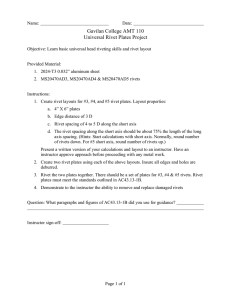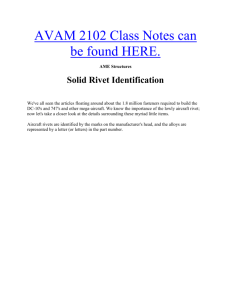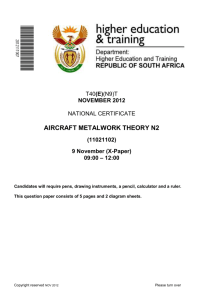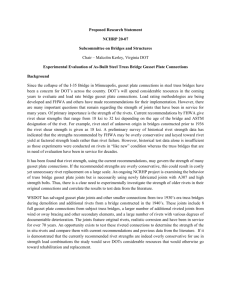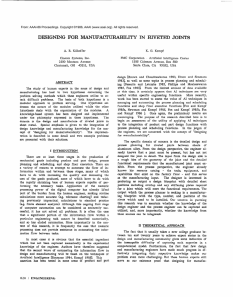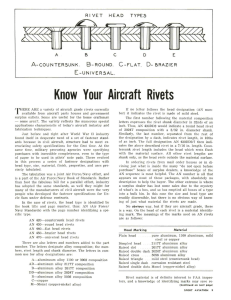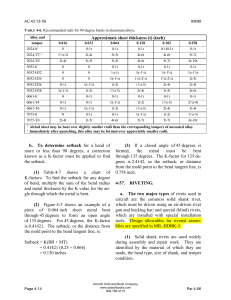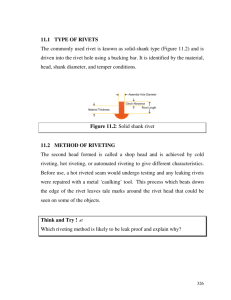RIVITING
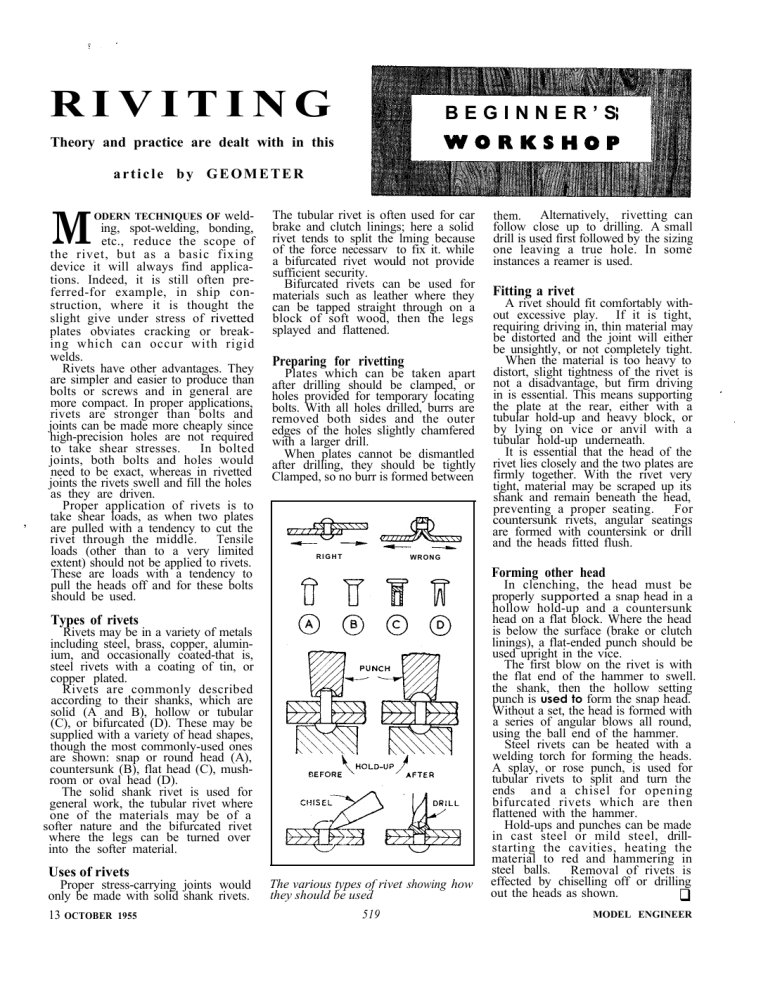
R I V I T I N G
Theory and practice are dealt with in this
B E G I N N E R ’ S
a r t i c l e b y G E O M E T E R
,
M
ODERN TECHNIQUES OF welding, spot-welding, bonding, etc., reduce the scope of the rivet, but as a basic fixing device it will always find applications. Indeed, it is still often preferred-for example, in ship construction, where it is thought the slight give under stress of rivetted plates obviates cracking or breaking which can occur with rigid welds.
Rivets have other advantages. They are simpler and easier to produce than bolts or screws and in general are more compact. In proper applications, rivets are stronger than bolts and joints can be made more cheaply since high-precision holes are not required to take shear stresses. In bolted joints, both bolts and holes would need to be exact, whereas in rivetted joints the rivets swell and fill the holes as they are driven.
Proper application of rivets is to take shear loads, as when two plates are pulled with a tendency to cut the rivet through the middle. Tensile loads (other than to a very limited extent) should not be applied to rivets.
These are loads with a tendency to pull the heads off and for these bolts should be used.
The tubular rivet is often used for car brake and clutch linings; here a solid rivet tends to split the lming because of the force necessarv to fix it. while a bifurcated rivet would not provide sufficient security.
Bifurcated rivets can be used for materials such as leather where they can be tapped straight through on a block of soft wood, then the legs splayed and flattened.
Preparing for rivetting
Plates which can be taken apart after drilling should be clamped, or holes provided for temporary locating bolts. With all holes drilled, burrs are removed both sides and the outer edges of the holes slightly chamfered with a larger drill.
When plates cannot be dismantled after drilling, they should be tightly
Clamped, so no burr is formed between
R I G H T W R O N G
Types of rivets
Rivets may be in a variety of metals including steel, brass, copper, aluminium, and occasionally coated-that is, steel rivets with a coating of tin, or copper plated.
Rivets are commonly described according to their shanks, which are solid (A and B), hollow or tubular
(C), or bifurcated (D). These may be supplied with a variety of head shapes, though the most commonly-used ones are shown: snap or round head (A), countersunk (B), flat head (C), mushroom or oval head (D).
The solid shank rivet is used for general work, the tubular rivet where one of the materials may be of a softer nature and the bifurcated rivet where the legs can be turned over into the softer material.
Uses of rivets
Proper stress-carrying joints would only be made with solid shank rivets.
The various types of rivet showing how they should be used
13 OCTOBER 1955
519 them. Alternatively, rivetting can follow close up to drilling. A small drill is used first followed by the sizing one leaving a true hole. In some instances a reamer is used.
Fitting a rivet
A rivet should fit comfortably without excessive play. If it is tight, requiring driving in, thin material may be distorted and the joint will either be unsightly, or not completely tight.
When the material is too heavy to distort, slight tightness of the rivet is not a disadvantage, but firm driving in is essential. This means supporting the plate at the rear, either with a tubular hold-up and heavy block, or by lying on vice or anvil with a tubular hold-up underneath.
It is essential that the head of the rivet lies closely and the two plates are firmly together. With the rivet very tight, material may be scraped up its shank and remain beneath the head, preventing a proper seating. For countersunk rivets, angular seatings are formed with countersink or drill and the heads fitted flush.
Forming other head
In clenching, the head must be properly supported a snap head in a hollow hold-up and a countersunk head on a flat block. Where the head is below the surface (brake or clutch linings), a flat-ended punch should be used upright in the vice.
The first blow on the rivet is with the flat end of the hammer to swell.
the shank, then the hollow setting punch is used to form the snap head.
Without a set, the head is formed with a series of angular blows all round, using the ball end of the hammer.
Steel rivets can be heated with a welding torch for forming the heads.
A splay, or rose punch, is used for tubular rivets to split and turn the ends and a chisel for opening bifurcated rivets which are then flattened with the hammer.
Hold-ups and punches can be made in cast steel or mild steel, drillstarting the cavities, heating the material to red and hammering in steel balls. Removal of rivets is effected by chiselling off or drilling out the heads as shown.
q
MODEL ENGINEER
